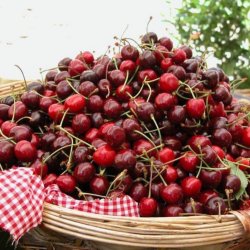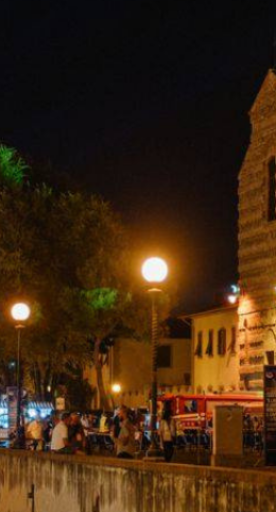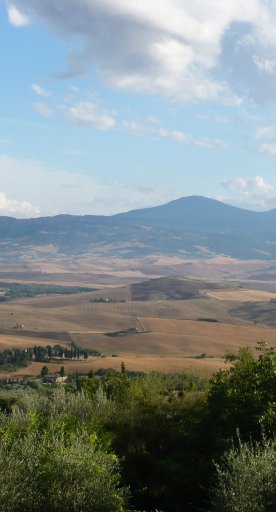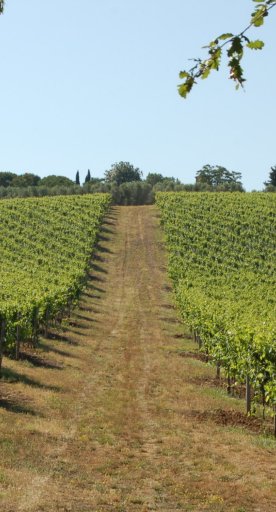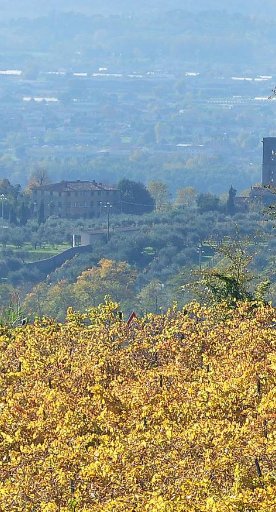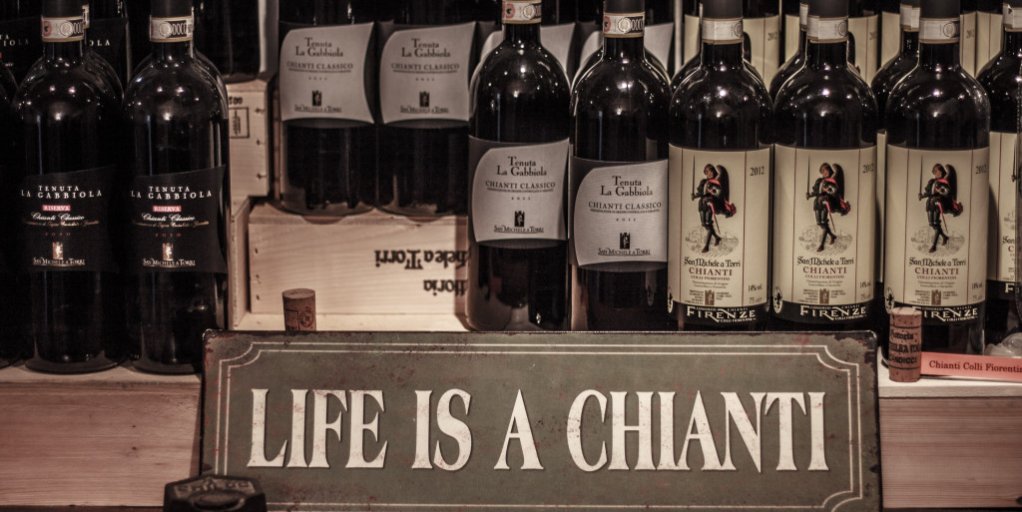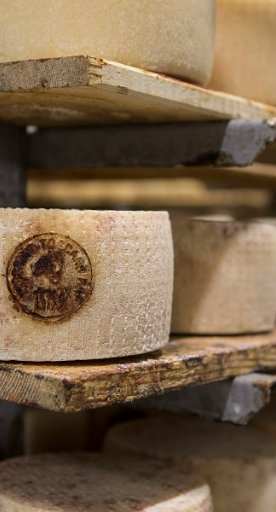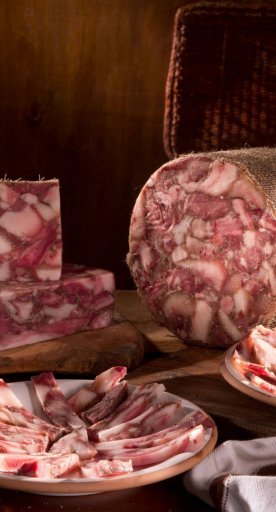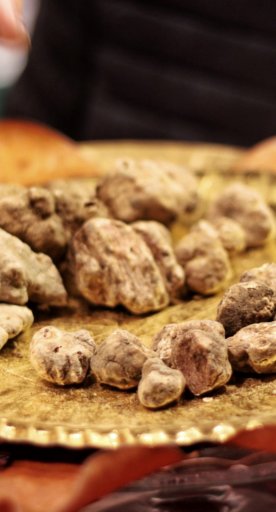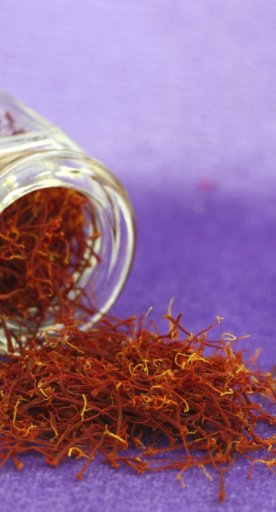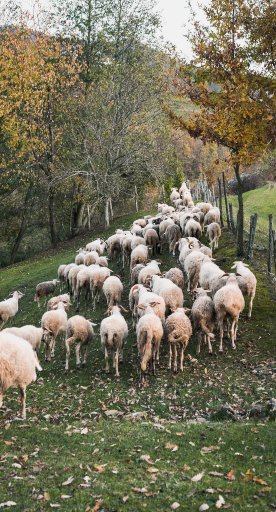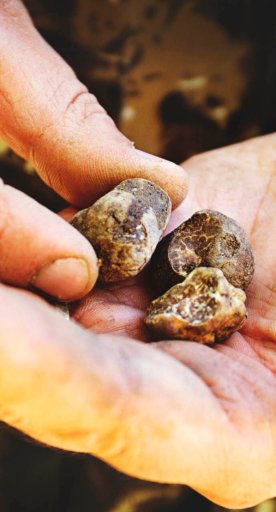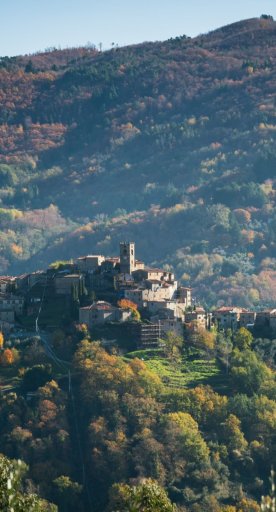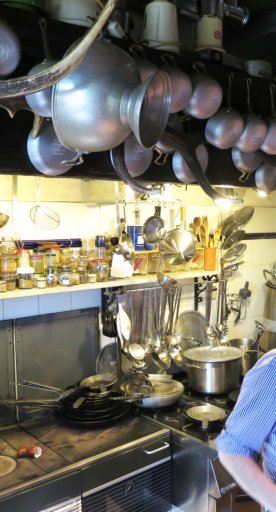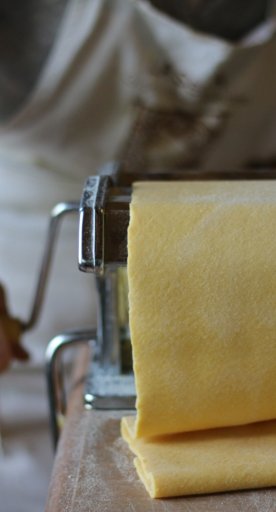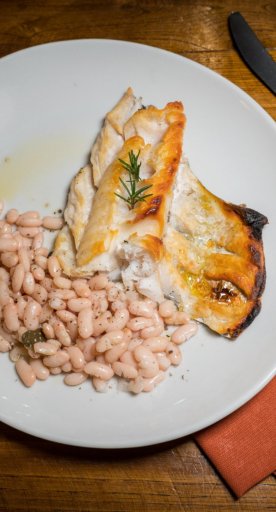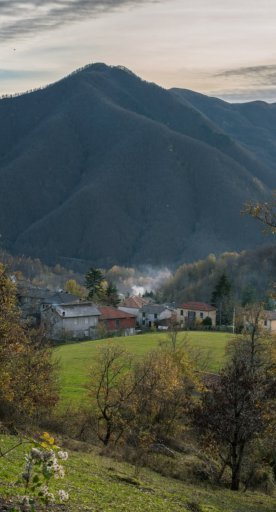10 dishes to taste in Tuscany
A tradition rich in flavor and poor ingredients
When the culinary choice is vast, it becomes really difficult to choose what is worth tasting in order to understand the authentic flavors of the places we visit.
In Tuscany, the ancient traditional flavors give surprising and tasty dishes that lend themselves to being revisited without, however, losing touch with their origin.
Here is a short list of those that must be tasted at least once in a lifetime!
-
1.Tuscan black croutons
-
2.Colonnata Lard
-
3.Panzanella
-
4.Pappa al pomodoro
-
5.Ribollita
-
6.Cacciucco
-
7.Tripe and lampredotto
-
8.Bistecca alla Fiorentina (Fiorentina steak)
-
9.Castagnaccio
-
10.Cantuccini with almonds
Tuscan black croutons

On holidays or special occasions you’ll always find them on the table: the black croutons made with chicken livers, capers and anchovies, are the quintessential Tuscan appetizer.
As is the case with all traditional recipes, each family prepares them according to its own version, but the accompanying Tuscan - unsalted - bread brings everyone together!
Colonnata Lard

The Colonnata Lard takes its name from the place where originated, a small village among the marble quarries near Carrara.
Born as a poor dish that was used by workers to bring the right amount of energy while working, it soon knows a new life.
With its characteristic white almost pinkish color, Colonnata Lard melts in your mouth and is enriched by the aftertaste of the aromatic herbs and spices with which it is prepared: pepper, rosemary, sage but also cinnamon and cloves.
Curing is done inside a marble basin rubbed with garlic. It is used in many ways: as an ingredient in a variety of dishes, but according to the classic version it is cut into very thin slices and laid on warm toasted slices of bread.
Panzanella
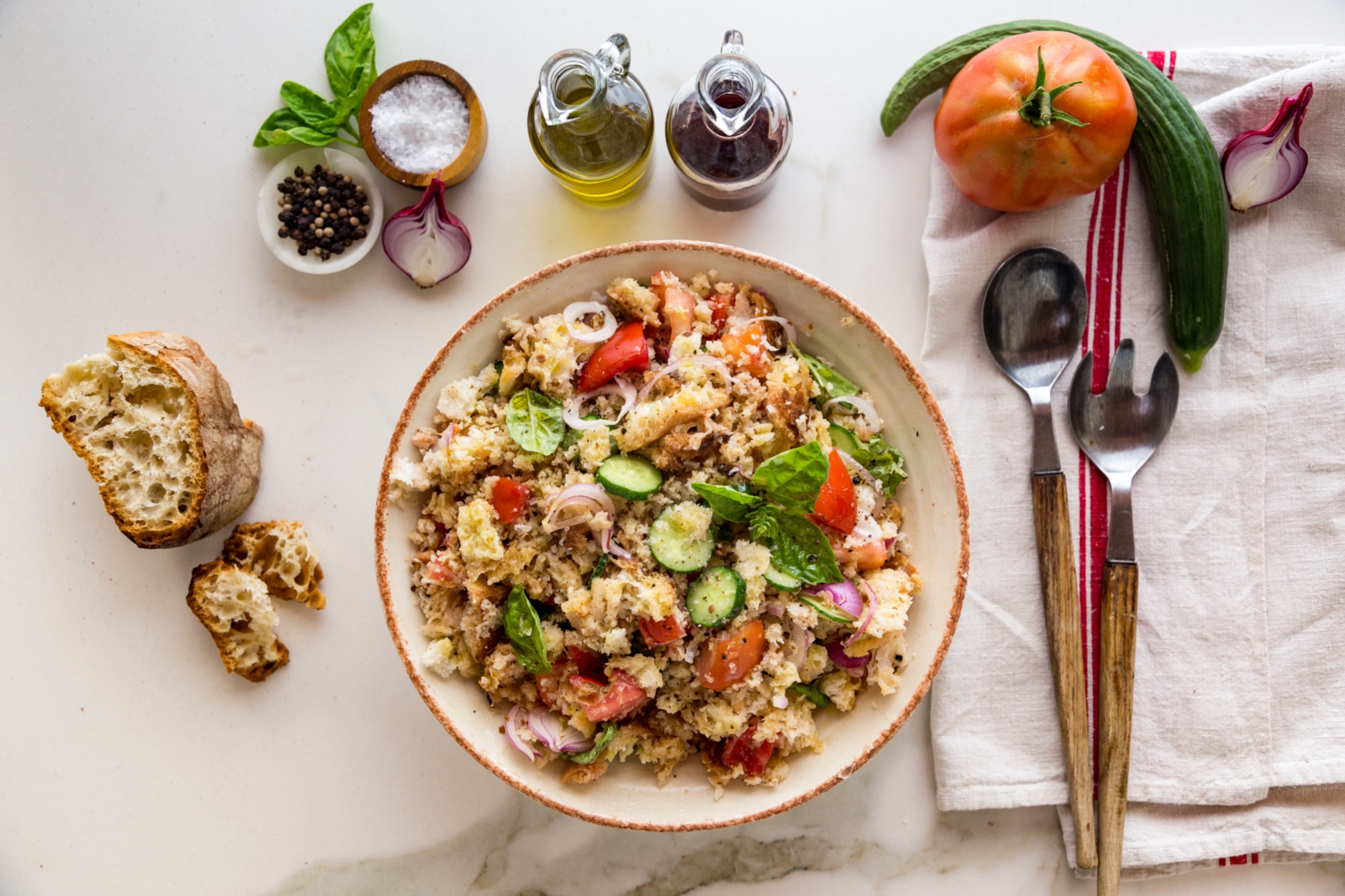
A summer dish par excellence, the panzanella features simple but high-quality ingredients: all that is needed is stale Tuscan bread, well-ripened tomatoes, onion and, of course, basil.
As is the case with any traditional dish, it can take many forms and also lends itself to the addition of other ingredients such as cucumbers and tuna.
In newer versions, it can become crispy by replacing stale bread with bread cut into cubes and toasted in the oven.
Pappa al pomodoro
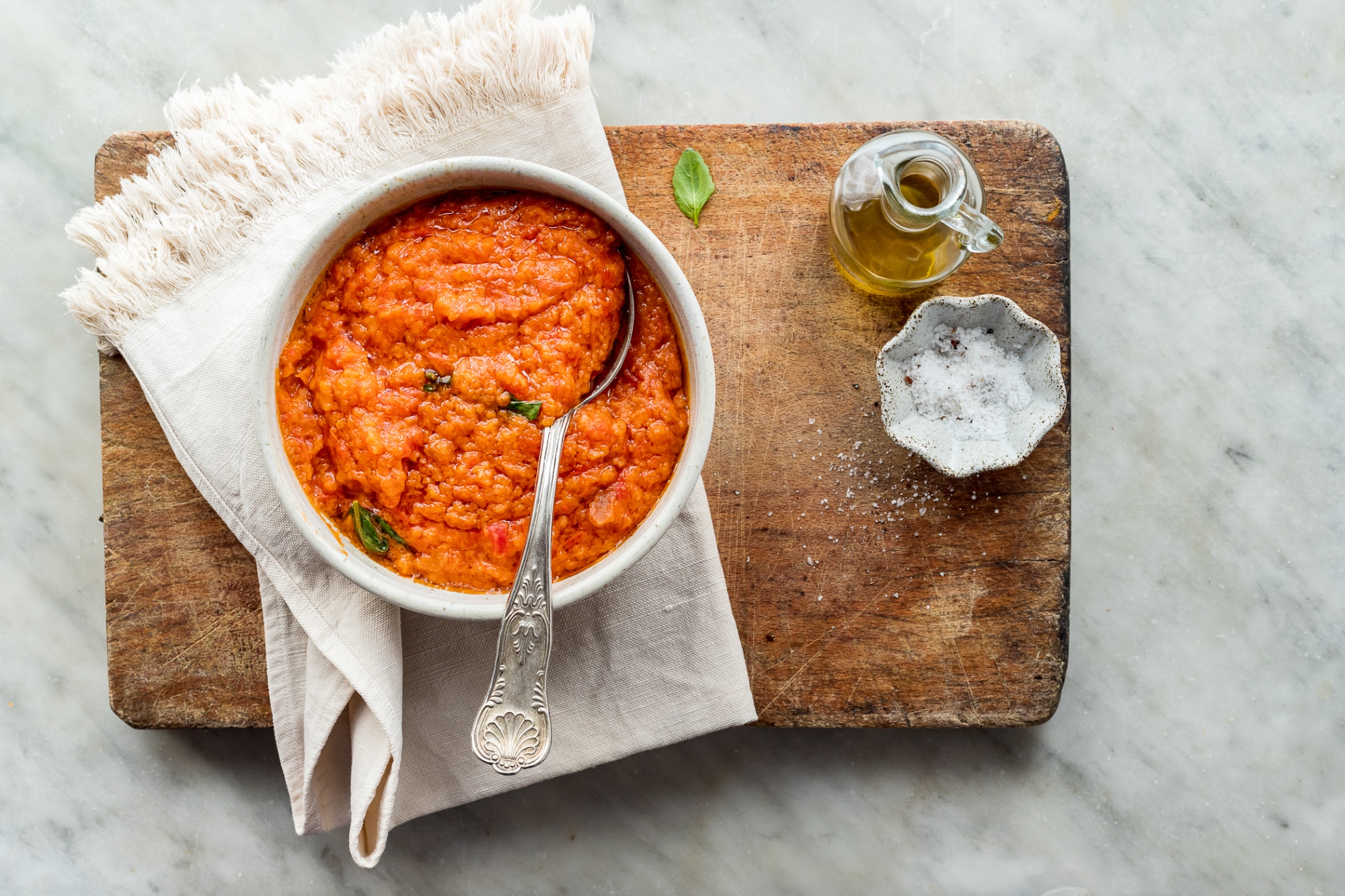
Another timeless summer classic, the pappa al pomodoro is a versatile dish made from simple, wholesome ingredients: tomatoes, bread, garlic, extra virgin olive oil and with as much basil as you like.
Although the raw materials may suggest a straightforward-tasting dish, the quality and seasonality of the produce make it truly unmatched.
Again, the stale bread must be absolutely Tuscan, that is, saltless with a crunchy crust and soft crumb so that - once stale - it can become the ideal base for this soup.
Ribollita

The queen of winter tables is undoubtedly the ribollita: this time, stale bread is accompanied by cannellini beans and black cabbage, which go perfectly with onion, garlic, carrots, celery and potatoes.
Extra virgin olive oil is a must to season it.
The day after the soup is prepared, it tastes even better: hence the name ribollita, meaning boiled several times!
Cacciucco

A fragrant, rich and tasty seafood dish.
The cacciucco originated in Livorno as a soup to recover fish that was too small and that was not sold at the market.
Apparently, the name is an italianization of the Turkish küçük which means, indeed, small but as is the case with all ancient recipes, there are many legends about its origin.
In this poor dish all the ingredients must be well balanced so that none overpowers the others.
The preparation is quite long but the end result will repay the effort: toasted bread rubbed with fresh garlic is added to the chowder at the end.
Tripe and lampredotto

Absolute protagonists of Tuscan street food, the tripe and lampredotto (a kind of tripe) must absolutely be tried at one of the many kiosks found on every corner of Florence.
Lampredotto is served in the classic Tuscan bun - the semelle - and accompanied by various seasonings: ranging from simple salt and pepper, to the traditional salsa verde (green sauce).
It is the meat of the abomaso (abomasum), one of the four sections of the ruminant stomach, which is part of the so-called quinto quarto (fifth quarter), or everything that is normally discarded but can be recovered.
To enjoy the real Florentine dish, the bread must be soaked in the cooking pot of the lampredotto.
Tripe, another part of the ruminant stomach, is traditionally prepared with tomato. It is usually eaten as a main course and can be enjoyed on the street, served very hot and accompanied by an excellent glass of Chianti.
Bistecca alla Fiorentina (Fiorentina steak)

We cannot talk about Tuscan dishes without mentioning the popular bistecca alla fiorentina: it is so famous that it is simply called fiorentina by everyone, already Pellegrino Artusi wrote about it, indicating its ideal measurements and weight.
The meat used is Chianina beef, but Maremma, Marche and Romagnola beef are also tolerated.
Cooking must be strictly rare and on the grill, without any kind of seasoning. Only after cooking are salt and pepper added.
Castagnaccio

A typical autumn dessert, castagnaccio comprises in its taste all the flavor of this season.
The main ingredient is chestnut flour, which must be of excellent quality - possibly organic and stone-ground - to which pine nuts, rosemary, oil and a pinch of salt are added.
In this case, too, there are several variations and interpretations, such as the addition of orange peel or raisins.
Cantuccini with almonds
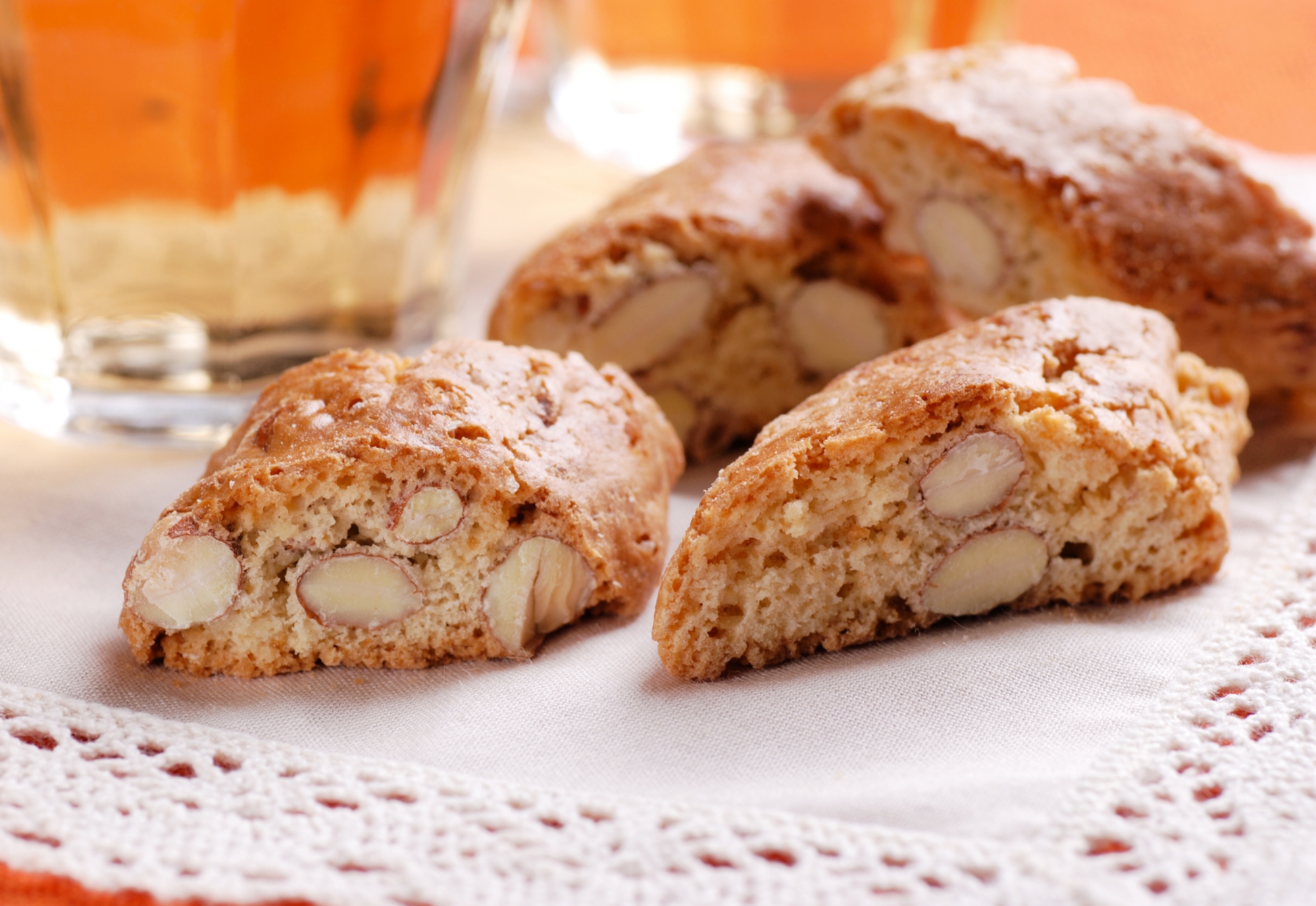
Cantuccini are a symbol of the whole of Tuscany. They are prepared with flour, sugar, butter, almonds and eggs and once baked as a whole loaf, they are cut while still warm and put back into the oven - this technique is the secret of their crunchiness. For a really delicious taste, you really do have to dip the cookies quickly in Vinsanto.










